The Rongai Route offers a unique and less crowded approach to conquering Kilimanjaro. This 6-day trek showcases the mountain’s diverse landscapes, from lush forests to alpine deserts, culminating at the Kibo crater. With a maximum group size of 15, it provides a peaceful climbing experience with well-spaced campsites for better acclimatization. Trekkers can expect essential amenities for comfort, making this an unforgettable adventure. But before embarking on this journey, there are key considerations to keep in mind to ensure a successful and safe Rongai climb.
Good To Know
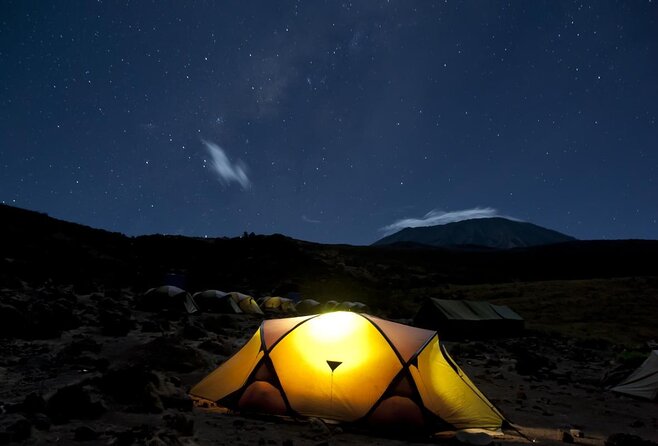
- The Rongai Route is a less crowded and remote approach to Kilimanjaro, offering stunning views of the Kenyan plains.
- The gradual ascent and well-spaced campsites of the Rongai Route enhance acclimatization chances for climbers.
- Proper physical fitness, essential gear, and familiarity with the route and emergency procedures are crucial for a successful Rongai climb.
- The Rongai Route provides comfortable accommodations with essential amenities, including spacious tents and dining facilities.
- The best time to climb the Rongai Route is during the dry seasons of January-March and June-October.
Overview of the Rongai Route

Scaling Kilimanjaro via the Rongai Route offers a less crowded and more remote trekking experience compared to the popular Marangu and Machame routes.
This route approaches the mountain from the northeastern side, providing stunning views of the Kenyan plains. The trek takes 6 days to reach the summit, with a maximum group size of 15 travelers.
Trekkers will enjoy a moderate level of physical fitness, as the route is considered less challenging than others. With a rating of 5.0 from 6 reviews, the Rongai Route is a popular choice for those seeking a more peaceful Kilimanjaro climb.
Pickup from Kilimanjaro Airport and surrounding areas is included, with a start time of 8 AM.
You can also read our reviews of more tours and experiences in Moshi.
Highlights of the Rongai Trek
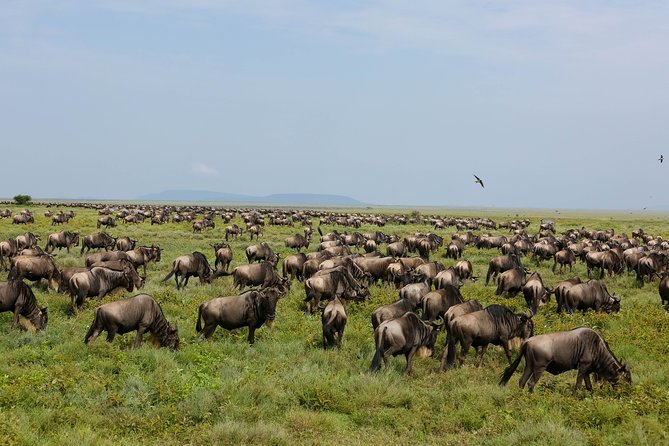
The Rongai Route offers a unique and captivating trek up Kilimanjaro. It’s the only route that approaches the mountain from the north, providing stunning views of the wilderness and diverse landscapes.
Trekkers will encounter lush forests, moorlands, and alpine deserts, culminating in the dramatic Kibo crater. The climb is considered less crowded and more scenic than other routes, making it a popular choice.
Plus, the gradual ascent and well-spaced campsites allow for proper acclimatization, increasing the chances of reaching the summit.
With its diverse terrain, exceptional views, and manageable pace, the Rongai Route is an unforgettable adventure for those seeking to conquer the highest free-standing mountain in the world.
Preparing for the Rongai Climb
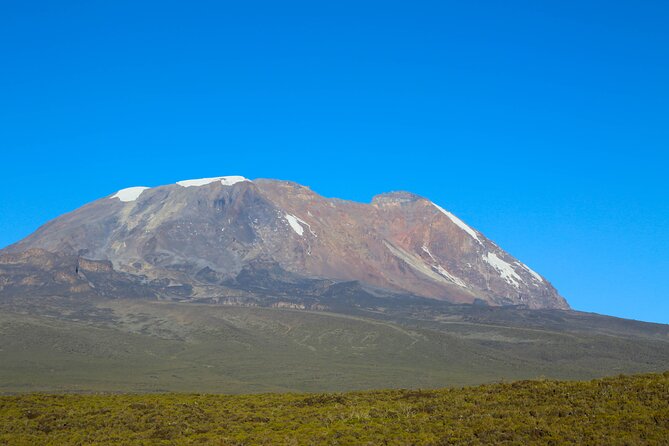
Preparing for the Rongai Climb requires thorough planning and consideration of several key factors.
First, hikers must ensure they’ve the necessary physical fitness and endurance for the demanding trek. This includes engaging in regular cardiovascular exercises and strength training in the months leading up to the climb.
Proper equipment, such as high-quality hiking boots, layered clothing, and a reliable backpack, is also crucial.
Hikers should familiarize themselves with the route, acclimatization process, and emergency procedures.
Lastly, obtaining travel insurance and ensuring all necessary permits and visas are in order will help ensure a smooth and safe expedition.
With the right preparation, trekkers can look forward to an unforgettable journey to the "Roof of Africa."
Day-by-Day Itinerary of the Rongai Route
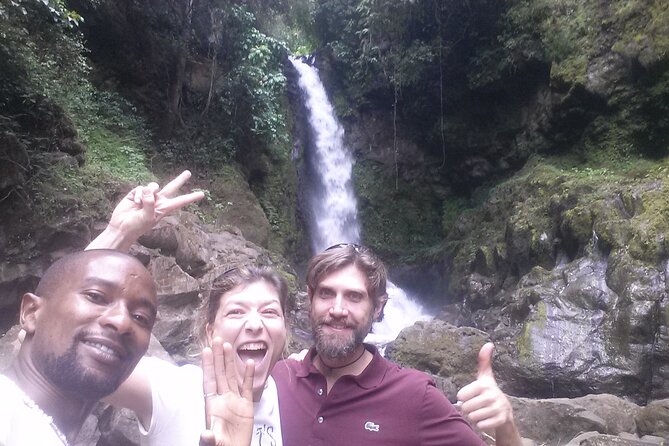
With the proper preparation complete, hikers now embark on the Rongai Route‘s day-by-day itinerary. The first day involves a scenic drive to the Rongai Gate and a hike through lush forests to Rongai Camp.
The next two days are dedicated to steadily climbing through moorland and alpine desert landscapes. On day four, climbers reach Kibo Hut, the launching point for the summit attempt.
The final push to the top of Kilimanjaro begins around midnight, with the goal of reaching the summit by sunrise. After celebrating the achievement, hikers descend back to the Rongai Gate over two days.
The Rongai Route’s itinerary includes:
- Day 1: Rongai Gate to Rongai Camp
- Days 2-3: Steady ascent through moorland and alpine desert
- Day 4: Reach Kibo Hut
- Day 5: Summit attempt and descent
Accommodations on the Rongai Route
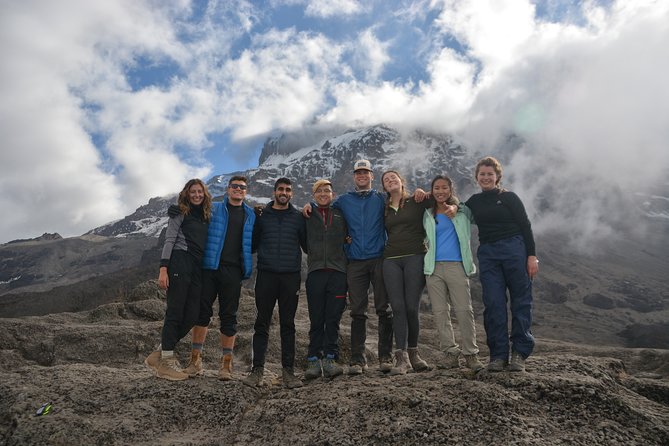
Along the Rongai Route, climbers can expect comfortable accommodations tailored to their needs.
Campsites are well-equipped with spacious tents, foam sleeping pads, and dining tents for meals. Toilet facilities, though basic, are maintained regularly for hygiene.
Guides ensure that campsites are set up in advance, allowing climbers to rest upon arrival. The route provides a mix of basic but sufficient amenities to ensure a pleasant and supported trek.
Porters carry the bulk of the gear, allowing climbers to focus on the ascent. With these accommodations, the Rongai Route offers a comfortable and supported experience for those seeking to conquer Kilimanjaro.
Equipment and Gear for the Rongai Route
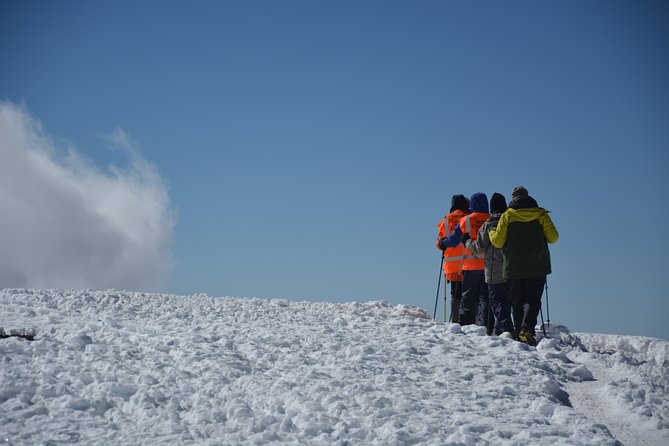
Climbers tackling the Rongai Route will need to ensure they’ve the proper equipment and gear to make their expedition a success.
A comprehensive packing list is essential, including:
- Warm, layered clothing such as thermal underwear, fleece jackets, and waterproof outerwear
- Sturdy, broken-in hiking boots with good traction
- Trekking poles to assist with stability and reduce stress on the knees
- Headlamp, water bottle, snacks, and sun protection to keep you comfortable and prepared on the trail.
Investing in quality gear can make all the difference in your Kilimanjaro climb, so it’s worth doing your research and packing wisely.
Tips for Successful Rongai Trekking
A successful Rongai trek on Kilimanjaro requires thorough preparation and prudent decision-making throughout the journey.
Proper acclimatization is crucial, so hikers should follow the recommended itinerary and listen to their guides. Staying hydrated and maintaining a steady pace are essential.
Trekkers should pack appropriately for the changing weather conditions, carrying warm layers and rain gear. Managing one’s energy and pace is key, as is being aware of signs of altitude sickness.
Communication with the guide and fellow trekkers is vital. With the right mindset, physical preparation, and adherence to safety protocols, hikers can conquer the Rongai Route and reach the summit of Kilimanjaro.
Frequently Asked Questions About the Rongai Route
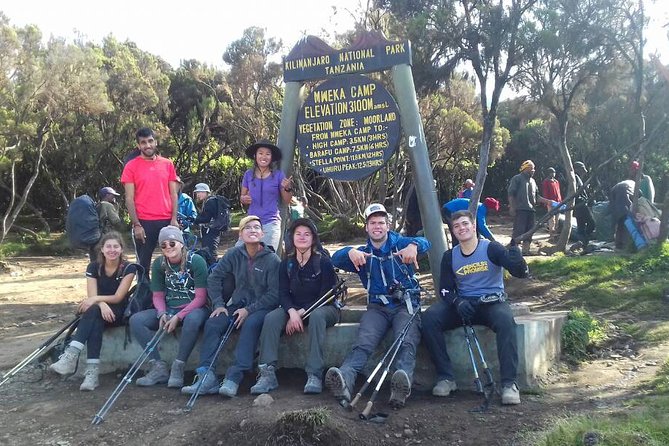
Many common questions often arise when planning a Rongai Route trek on Mount Kilimanjaro.
What’s the best time of year to climb? How many days are required? Can I rent gear locally? Is the route more difficult than other options?
The Rongai Route is typically climbed over 6-7 days, with the best weather conditions occurring during the dry seasons of January-March and June-October.
While some gear can be rented in Moshi, it’s recommended to bring your own to ensure proper fit and quality.
While less crowded than other routes, the Rongai is considered moderately challenging, requiring a good level of physical fitness.
Frequently Asked Questions
What Is the Typical Group Size for This Trek?
The typical group size for this trek is up to 15 travelers. The tour operator, Habari Adventure, limits the maximum group size to ensure a personalized and comfortable experience for participants on the Kilimanjaro Climbing Rongai Route.
Can I Book This Trek as a Solo Traveler?
Yes, solo travelers can book this trek. The maximum group size is 15 travelers, so solo travelers are welcome to join a group and experience the Kilimanjaro Climbing Rongai Route with other adventurous individuals.
Is It Possible to Customize the Itinerary?
Yes, you can typically customize the itinerary for this Kilimanjaro trek. Many operators offer flexible options to adjust the route, pace, or trek duration based on your preferences and fitness level.
What Is the Weather Like During the Trek?
The weather during the trek can vary greatly. Climbers should expect chilly temperatures at higher elevations, particularly at night. Daytime temperatures are generally pleasant, but rain and occasional snow showers are common. Proper layering and preparation for changing conditions are essential.
Can I Leave My Luggage at the Hotel During the Trek?
You can typically leave your luggage at the hotel during the trek. Many tour operators offer this service to allow climbers to travel light and focus on the hike. Just be sure to confirm the arrangement with your tour provider.
The Sum Up
The Rongai Route offers a unique and peaceful approach to climbing Kilimanjaro. This 6-day trek showcases diverse landscapes, comfortable campsites, and essential amenities, making it an unforgettable adventure. With a maximum group size of 15, climbers can enjoy the stunning views of the Kenyan plains and the Kibo crater in a less crowded environment. The Rongai Route is an excellent choice for those seeking a memorable Kilimanjaro experience.
More Tour Reviews in Moshi
Not for you? Here's more nearby things to do in Moshi we have reviewed
- Day Trip To Tarangire National Park
- Mountain Kilimanjaro Climbing 6 Days Machame Route
- 6 Days Rongai Route Climbing Mt.Kilimanjaro
- 7-Day Kilimanjaro Climb Machame Route
- 7-Days Tour Mount Kilimanjaro Trekking via Machame Route
- Kilimanjaro: Lemosho Route and Camping Safari
- 8 Days 7 Nights Private Lodge Safari
- 5 Days Comfort Safari in Tanzania
- 2 Days Lodge Safari.
- One Day Tanzania Safari – Tarangire or Arusha National Park
- Day Trip Lake Manyara
- Mt.kilimanjaro-machame Route
